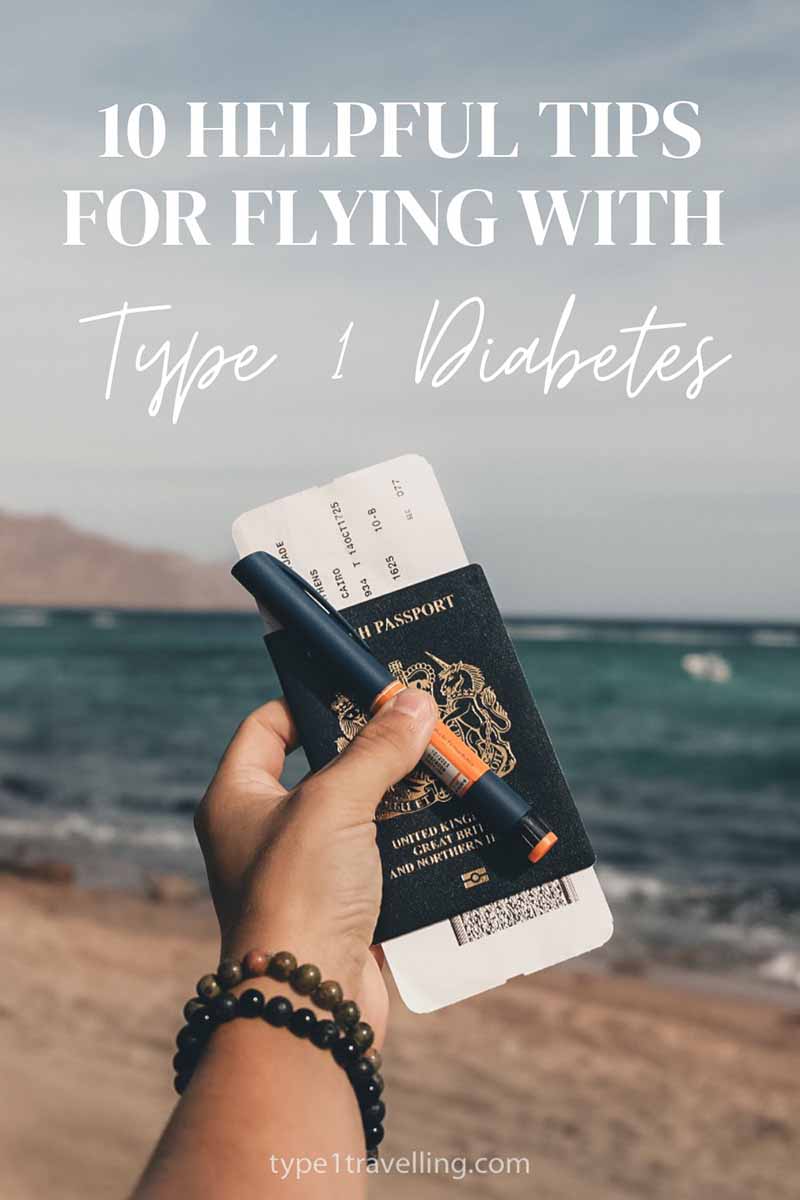Some of the links in this post are affiliate links. If you use the link to make a qualifying purchase, I’ll make a small commission at no extra cost to you. As always, thanks for being here!
Taking a flight doesn’t have to be stressful or problematic because of type 1 diabetes. Follow these tips I’ve picked up over years of travel to make flying with diabetes as smooth as possible!
In the years since I was diagnosed with type 1 diabetes in 2011, I’ve taken my fair share of flights.
Short-haul, long-haul, international, domestic – I’ve experienced them all. Especially since 2018 when my passion for backpacker travel ignited!
And while I can admit that as a diabetic there is more to think about when flying compared to the average traveller, there’s no reason why we can’t also enjoy a comfortable journey en route to our next destination!
As always with type 1 diabetes, the key to a successful flight is being well-prepared and organised.
And to help you have the best flying experience, I’ve put together this article which is filled with all the useful tips I’ve learned over the years through first-hand experience of flying with type 1 diabetes!
- 10 Tips For Flying With Type 1 Diabetes
- 1. Don't Pack Insulin And Diabetic Supplies In Hold Luggage
- 2. Keep insulin and emergency hypo supplies with you (not in the overhead locker)
- Looking for travel insurance covering diabetes?
- 3. Carry Dextro glucose tablets to treat hypos
- 4. Check blood sugar levels more often
- 5. Bring your diabetes documents
- 6. Carry Insulin in a TSA-approved cooler
- 7. Stay hydrated
- 8. Move Around When You Can
- 9. Exercise In The Days Before Travelling
- 10. Don’t Inject Until You Have Your Airline Meal in Front of You
- Flying With Type 1 Diabetes FAQs
- To Finish
- Pin It For Later!
- More Travel and Diabetes Guides
10 Tips For Flying With Type 1 Diabetes
Some of these tips involve things to do before a flight and some are for during the flight. However, all will help your overall flying experience to be as comfortable as possible from a diabetes perspective!
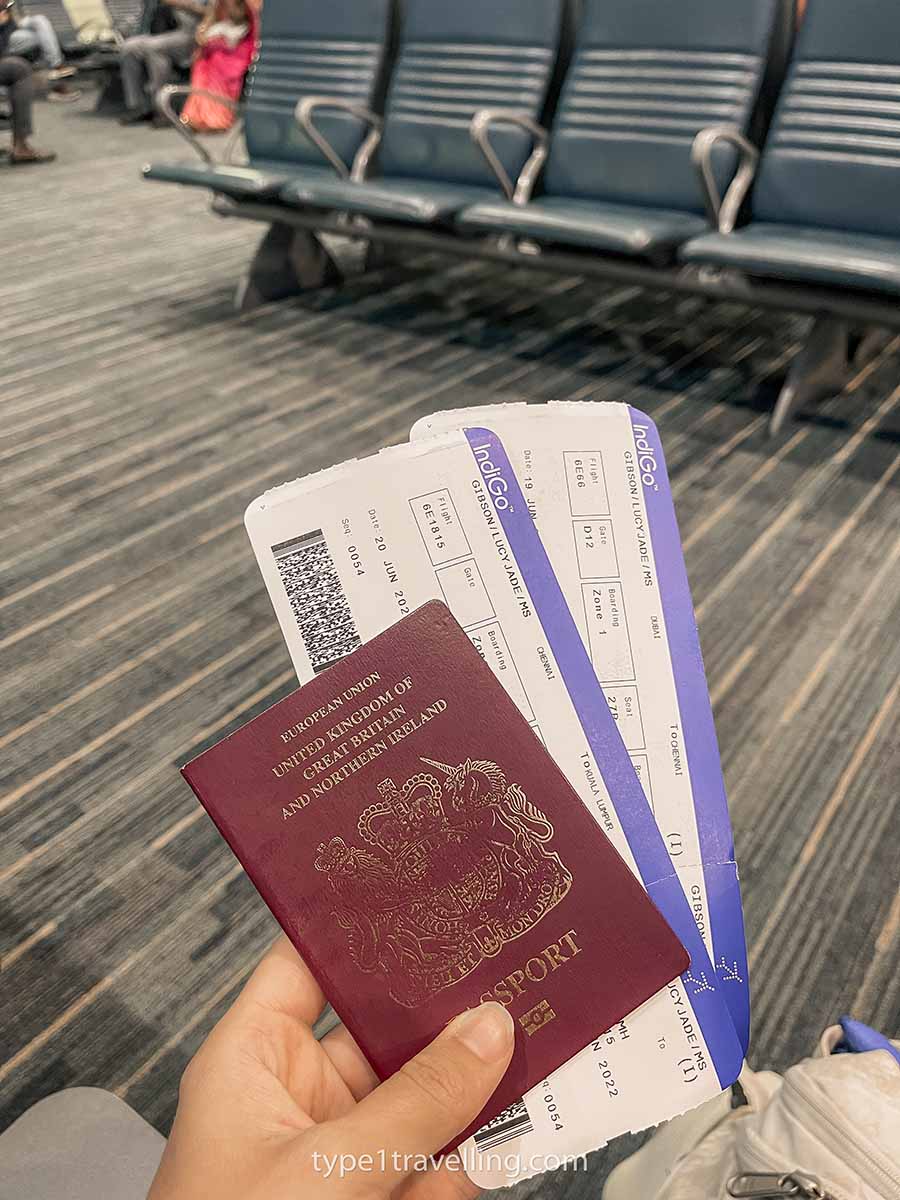
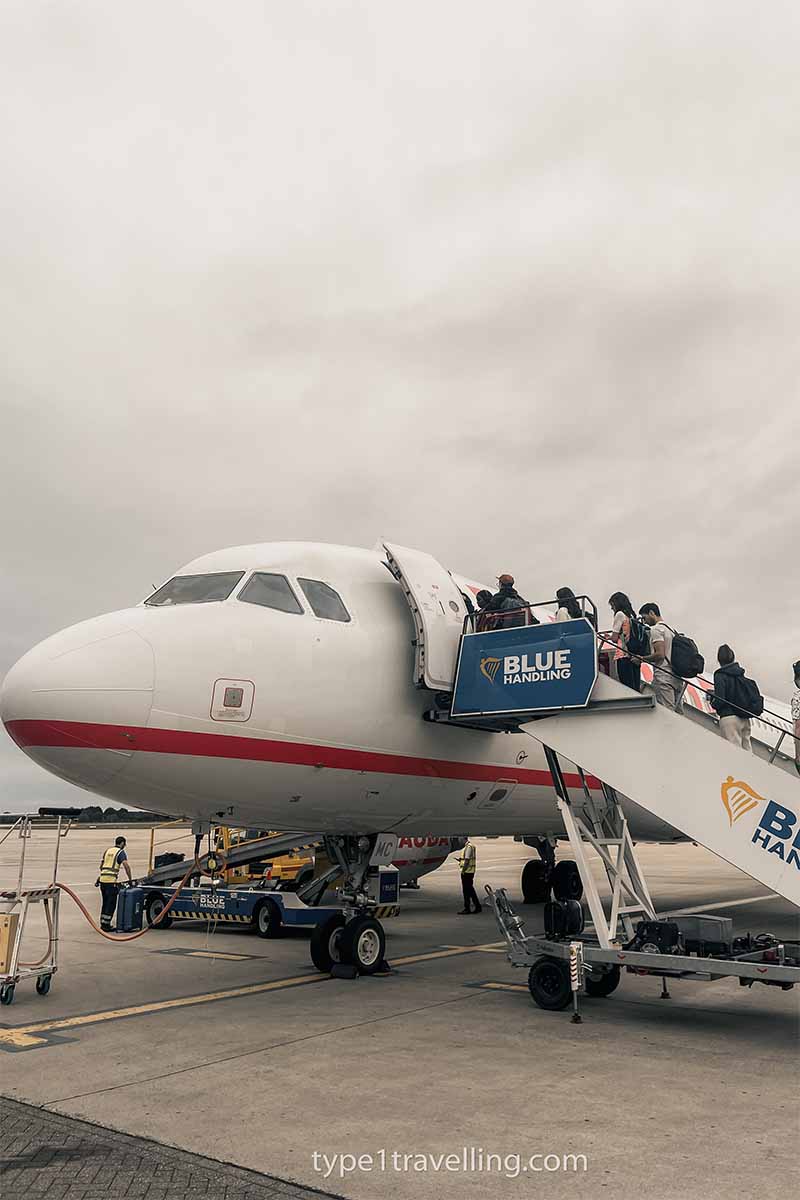
1. Don’t Pack Insulin And Diabetic Supplies In Hold Luggage
The number one thing to always remember when flying is to NEVER pack your insulin or other diabetic supplies in your hold luggage!
My first instinct when I started travelling with diabetes was to pack all of the insulin, needles, test strips, and other supplies that I wasn’t using in my hold luggage. It made sense as this is where I had the most space and would mean less to lug around in my carry-on.
However, there are a couple of reasons why you should never do this.
First, insulin can freeze in the aeroplane hold and render it useless.
Second, luggage can be lost or delayed at any time and you don’t want your diabetes supplies to be inside if this happens! It’s just not worth taking the chance.
Therefore, insulin and any other diabetic supplies should always be packed in your hand luggage!
2. Keep insulin and emergency hypo supplies with you (not in the overhead locker)
While most of your diabetes supplies can be safely stored in your carry-on in the cabin’s overhead lockers, make sure to keep your insulin, blood glucose metre and emergency hypo supplies that you may need during the flight with you at easy reach.
And by easy reach, I mean accessible without moving from your seat.
This is because turbulence, take-off and landings, and other unexpected things can cause the captain to switch on the fasten-seatbelt light. This means you’re not able to get up for anything until it is safe to do so and the light has been turned off.
Now this would be a terrible time for your sugars to drop or spike if your fast-acting sugar or insulin is up in the lockers.
Therefore, I always keep insulin and Dextrose tablets in my bumbag so I can take them whenever I need to.
3. Carry Dextro glucose tablets to treat hypos
My fast-acting sugar of choice to treat hypos is Dextro glucose tablets. And these are really handy to have when you’re flying.
These small packets don’t take up much space, are easy to pack, and mean I don’t need to worry about having them confiscated at airport security – something that is likely to happen with sugary drinks.
I can usually treat 3-4 hypos with one Dextro packet so they are really practical and convenient!

4. Check blood sugar levels more often
When it comes to diabetes management during a flight, one thing that can help your glucose control is testing your blood sugar levels more often than normal.
Flights usually mean a lot of sitting, not a lot of moving, and (if you’re like me) a fair bit of boredom snacking. This is a recipe for increased insulin sensitivity and can result in sugars rising more than they normally do.
I have definitely felt this happen to me, especially on longer flights, and found testing more often to really help me gain a more complete picture of how my sugars are being affected. This allows me to catch spikes or drops earlier and address them accordingly.
Of course, limiting high blood sugar is great for general health, but it also helps me avoid that irritable, restless and antsy feeling that can come with high sugars – which is a nightmare when trying to sit still on a flight!
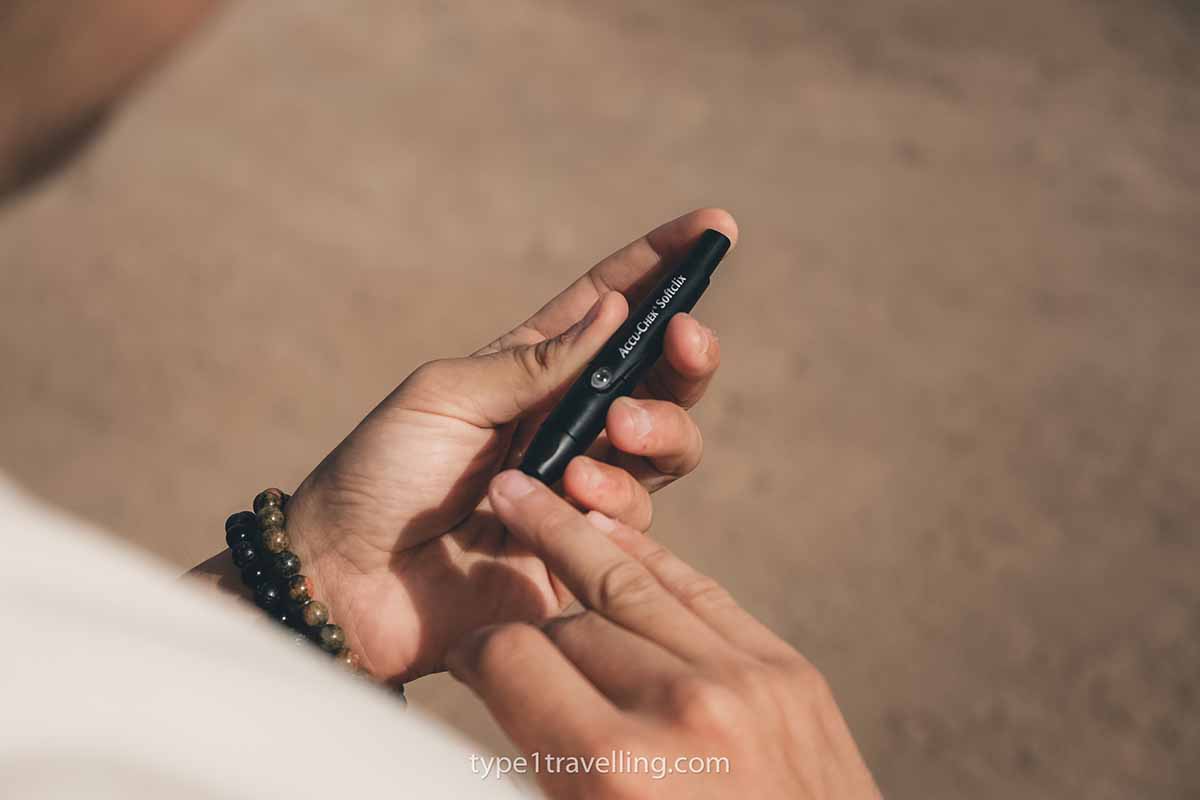
5. Bring your diabetes documents
Along with your passport, boarding pass, and travel insurance details, there are a few documents that diabetics should carry when flying.
These are a copy of your prescription and a letter from your doctor which states that you are diabetic and need to carry your medicine and devices to manage your condition.
In my experience, you probably won’t need these on most occasions but it’s important to have them as you may be required to present them by airlines or airport security.
I haven’t actually needed my doctor’s letter yet in all my years of travel, but have been asked to show my prescription on a few occasions.
But you know how it goes – the time you need it will be when you don’t have it!
Related Post: The Essential Diabetes Travel Checklist
6. Carry Insulin in a TSA-approved cooler
I’m sure it’s been drilled into you that it’s vital to keep all insulin at the appropriate temperature – room temperature for in-use insulin and fridge temperature for unopened insulin.
This means that if you’re travelling to a hot destination or with unopened insulin, it’s advisable to store your insulin in an appropriate cooler that’s TSA-approved.
By being TSA-approved, you won’t have to worry about the cooler breaching any rules at airport security or run the risk of it being confiscated.
I use a couple of coolers from 4ALLFAMILY to make sure all my insulin is stored safely.
My Chiller cool pouch keeps the insulin I’m using safe in hot destinations while my Voyager portable travel fridge keeps my unopened insulin cold until I get to my accommodation.
Both of these insulin coolers are TSA-approved and the perfect companions for any type of trip!
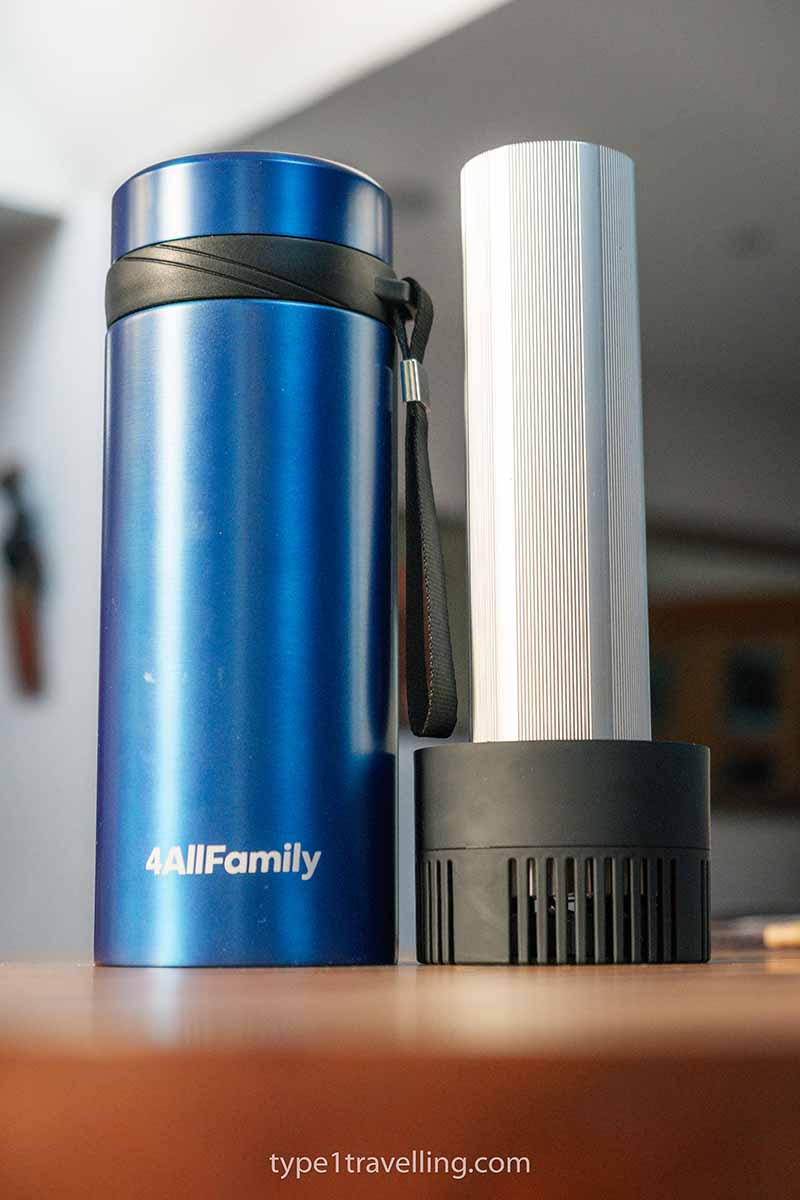
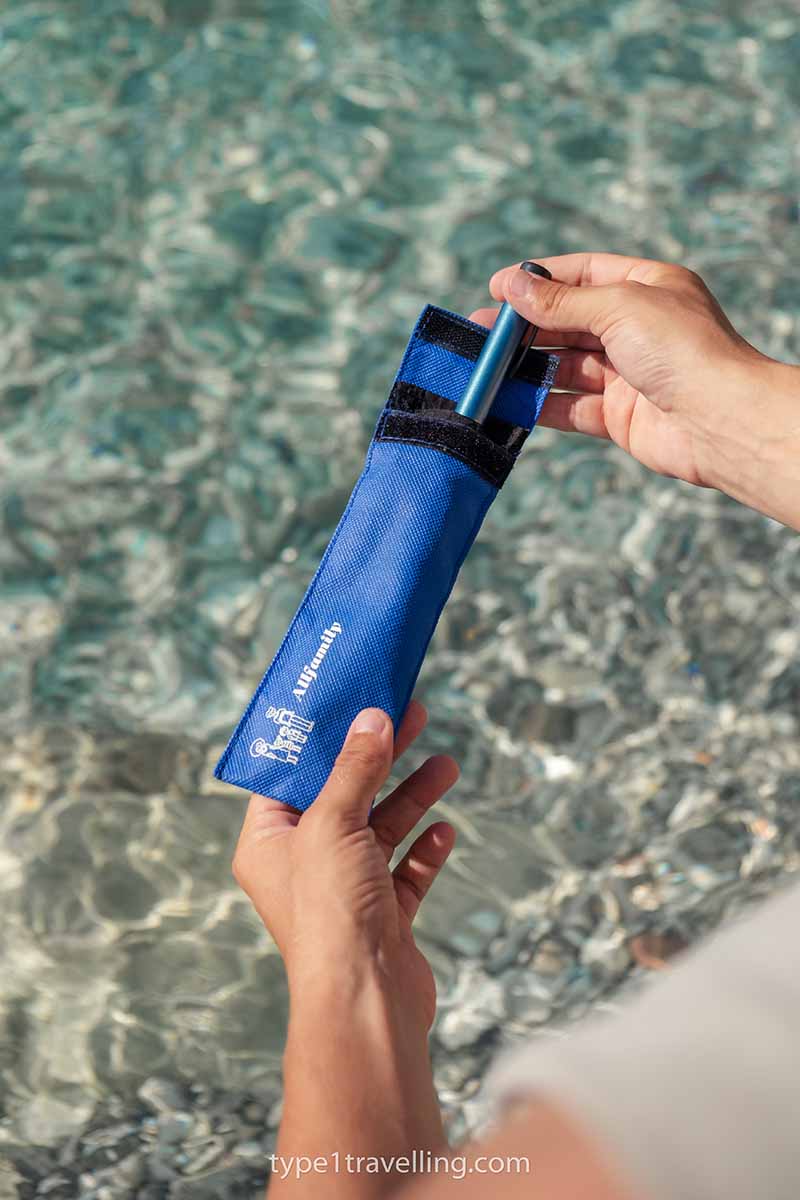
Read the full guide: Honest 4ALLFAMILY Insulin Cooler Review
7. Stay hydrated
Hydration and diabetes are two things that have always been linked.
I mean, most of us went through the tell-tale period of unquenchable thirst before being diagnosed, which is an immediate introduction to how dehydrated high blood sugars can make you!
However, it also works the other way around with dehydration able to cause blood sugar levels to rise due to less water in the bloodstream.
This isn’t ideal when a mix of altitude and less humid air can make you more dehydrated than normal when on a flight. Especially if you enjoy an alcoholic beverage to start your holiday as this also increases dehydration.
Dehydration isn’t going to have a major effect on your sugar levels on its own, but combined with the lack of physical activity (and probable snacking) on a flight, it’s yet another factor that can contribute.
Plus, dehydration just feels awful in general, which isn’t the best way to start your trip!
Therefore, it’s best to be proactive and keep your fluids up by drinking water regularly. I also try to remember to take a rehydration tablet before a flight to help keep on top of my hydration.
8. Move Around When You Can
I keep mentioning how the lack of movement and activity when flying can increase insulin sensitivity, and in turn, cause sugar levels to rise more than normal.
One way to try and combat this is to get up and have a wander around the cabin now and then.
This might not have a drastic impact but every little helps. And this is good for your blood circulation too!
Especially if you’re on a long-haul flight, it’s good to get up after each movie and stretch your legs, whether it’s a trip to the bathroom or just a wander up and down the aisle.
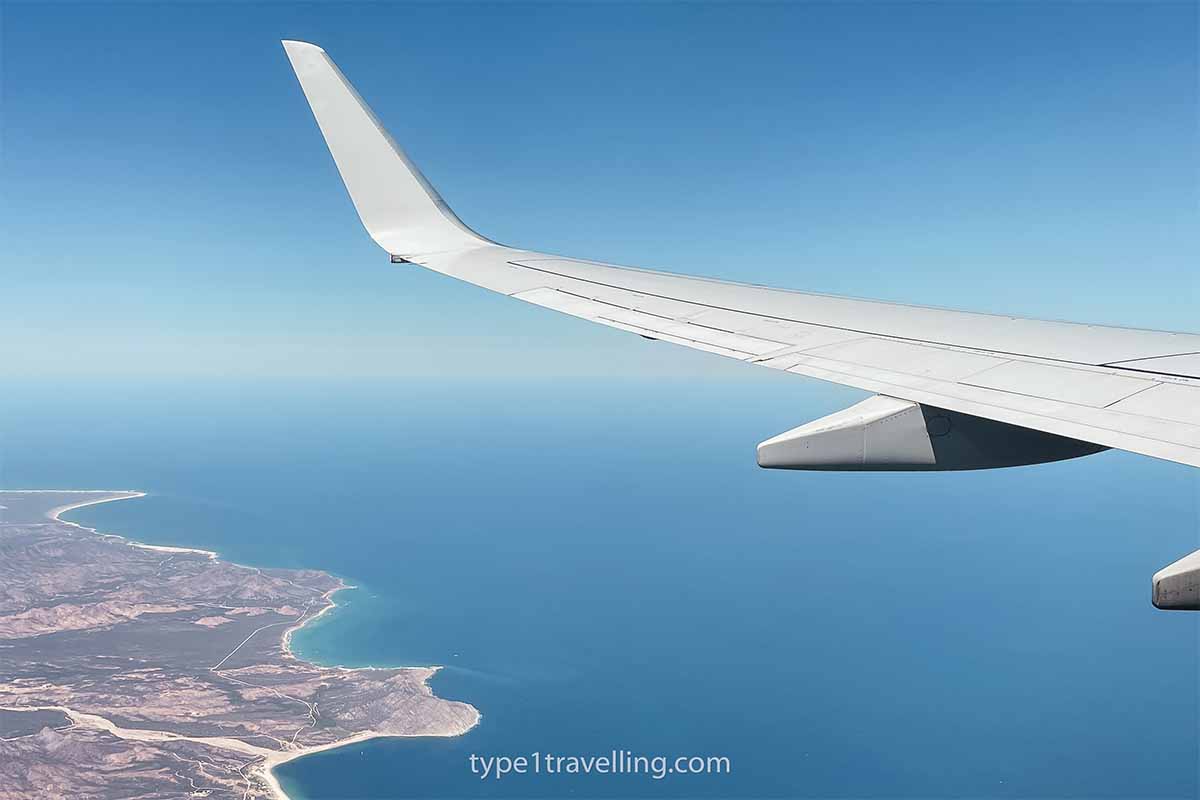
9. Exercise In The Days Before Travelling
Another way to help with the effect of flying on your insulin sensitivity is to make a conscious effort to exercise in the days before your travel.
I’ve found that making sure to get my steps in and to be as active as I can has a positive effect on my insulin sensitivity and helps counteract the effect of limited movement on the flight.
Again this won’t make or break things but it’s just another proactive way that you can help make your diabetes management while flying as controlled as possible.
10. Don’t Inject Until You Have Your Airline Meal in Front of You
These days some fast-acting insulins (like Novorapid that I use) are advised to be injected 15-30 minutes before eating.
However, if you are having an airline meal on a flight I recommend waiting until you have the meal in front of you before injecting. This is because I’ve seen meal service suddenly stopped due to unexpected turbulence and it isn’t resumed until safe to do so – which could be any length of time.
You don’t want to end up in a situation where you have injected in advance only for a big delay in meal service to happen, so I always wait until the meal’s been served!
Important: This is just based on what I do and you should always consult your health team for advice on what is best for you.
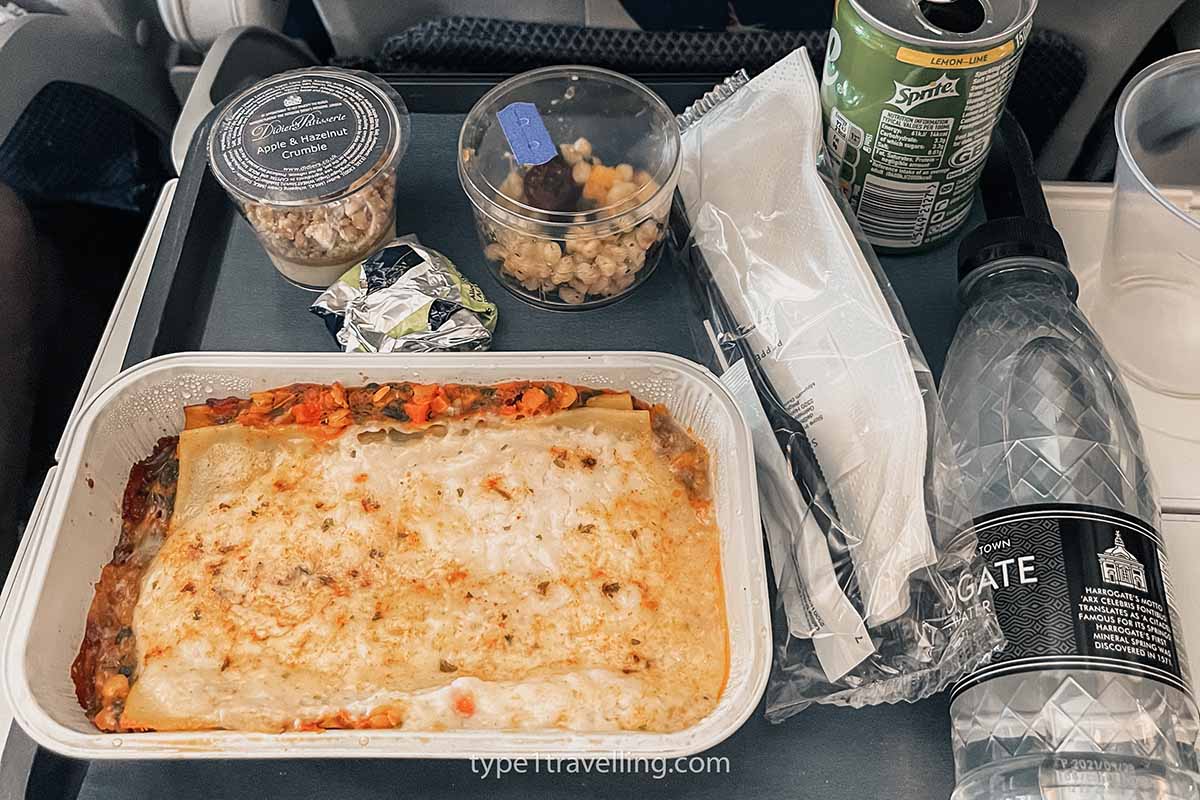
Flying With Type 1 Diabetes FAQs
Does flight altitude affect type 1 diabetes?
New research has reported that changes in altitude while flying can affect type 1 diabetics using an insulin pump. Flight take-offs may cause a pump to slightly over-deliver insulin, landings may cause a slight under-delivery, and sudden cabin decompression may cause the over-delivery of a large dose.
Flight altitude may also cause some blood glucose metres and CGMs (which use a glucose-oxygenase method) to give lower than accurate readings. This is due to the lower oxygen partial pressure in the cabin.
Do I need a doctor’s note to fly with insulin?
When flying with insulin it is advisable to always carry a letter from your doctor that states that you are diabetic and need to carry insulin and other diabetic supplies with you.
Is it possible to take insulin through airport security?
Yes, insulin can be taken through airport security. However, you should always carry a copy of your prescription and a letter from your doctor in case airport security asks you to present it.
To Finish
Managing your diabetes when flying may be slightly more challenging compared to your normal routine, but these tips should help keep your blood glucose as well controlled as possible!
But, I’m not a doctor who thinks you should be able to have perfect control all of the time. I’m a normal diabetic like you who knows how difficult managing type 1 diabetes can be, and I’d say give yourself a break, just do the best that you can, and most importantly – enjoy your trip!
If you have any questions about travelling with diabetes, leave a comment and I’ll get back to you ASAP!
Pin It For Later!
More Travel and Diabetes Guides
Check out some of my other Travel and Diabetes blog posts which are full of helpful information and my personal experiences!


